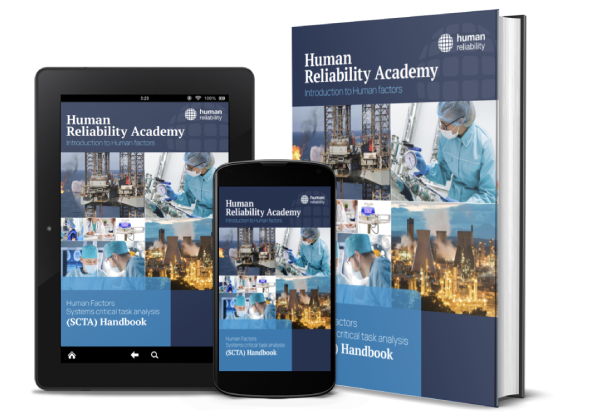ABSTRACT: The Control of Major Accident Hazards (COMAH) regulations, governing UK process plants, requires the use of Human Reliability Analysis techniques such as Human Factors Critical Task Review (HFCTR) for COMAH critical tasks. The process of HFCTR involves a task analysis, human failure analysis and Performance Influencing Factors (PIF) analysis of a safety critical task. The overall intended outcome of HFCTR is risk reduction through a detailed task structure, design recommendations, and the management of PIFs. Despite their importance there has been relatively little work on the quality of HFCTR. We reflect on over fifty years of combined experience working in this sector to explore the performance variability of HFCTR. We present the findings of the FRAM (Functional Resonance Analysis Method) analysis, strategies for success, and case studies highlighting variability in HFCTR application. This provides insight into what makes HFCTR flourish or stall.
HFCTR is also known as Safety Critical Task Analysis (SCTA) and Safety Critical Task Review (SCTR).
Authors: Dominic Furniss, Mark Sujan, Jamie Henderson & David Embrey
Original paper presented at ESREL can be downloaded here..
Citation: Furniss, D., Sujan, M., Henderson, J., & Embrey, D. (2019). What makes Human Factors Critical Task Reviews flourish or stall? Exploring performance variability using FRAM.
BRIEF WALKTHROUGH OF THE CORE OF THE PAPER
1. Sociotechnical systems are made up of many different interacting parts that can exhibit variability in their own performance, and can contribute to the whole system flourishing or stalling
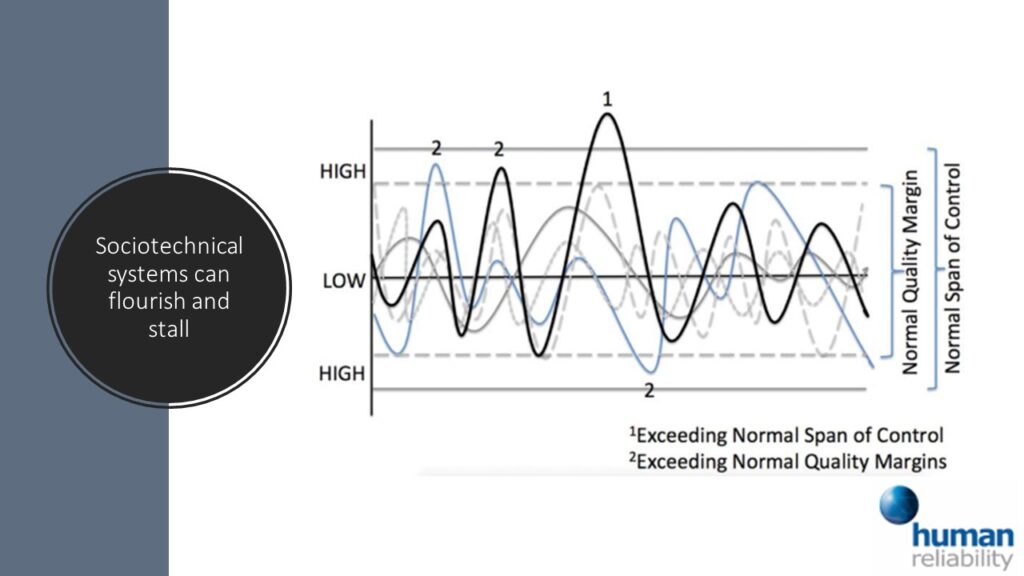
2. These systems can be examined using FRAM
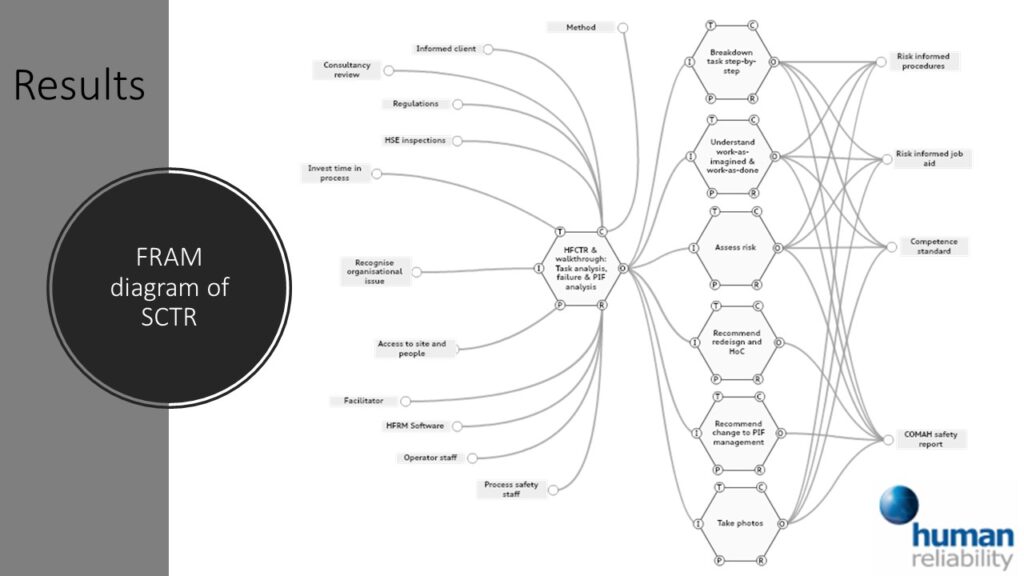
3. Strategies for success can be identified that are more likely to lead to the system to flourish rather than stall
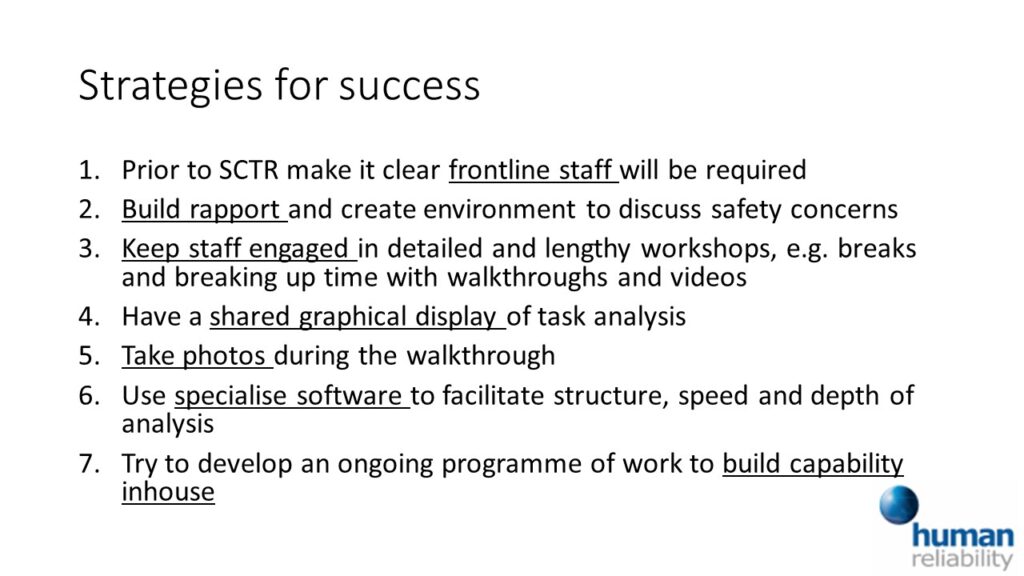
4. These interactions can also help explain why some systems struggle with performance
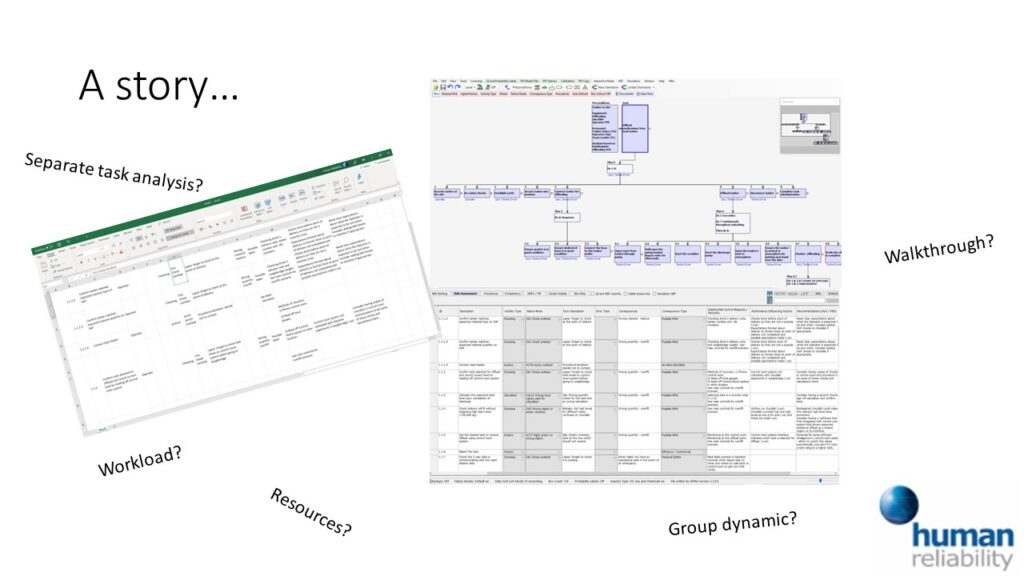
5. HFCTR (SCTA or SCTR) is not just a technical activity it is a sociotechnical system…
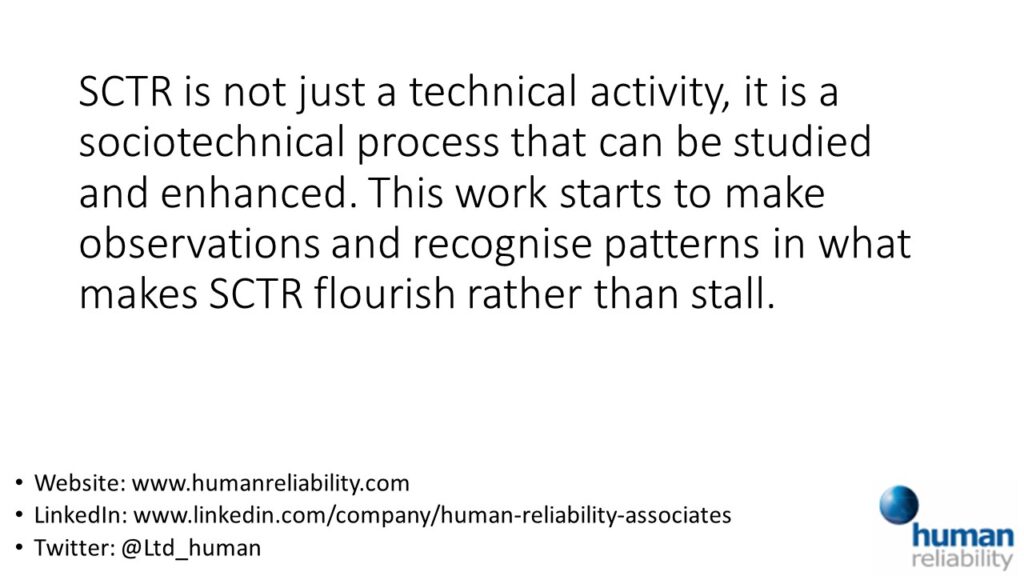
PAPER
Original paper presented at ESREL can be downloaded here.
Citation: Furniss, D., Sujan, M., Henderson, J., & Embrey, D. (2019). What makes Human Factors Critical Task Reviews flourish or stall? Exploring performance variability using FRAM.
PRESENTATION
Presentation at ESREL in Hanover 2019 can be viewed below:
Ideas in this paper were subsequently developed in our paper for Hazards 30: https://www.humanreliability.com/blog/evolving-safety-critical-task-analysis/
EXTRA INFORMATION
If you’re new to Human Factors or Human Factors Critical Task Review (HFCTR) more broadly, then check out our FREE 30min mini-course on the subject: https://the.humanreliabilityacademy.com/courses/mini-course-on-hfctr
Here is a link to our flagship SCTA course for Process Industries: https://the.humanreliabilityacademy.com/courses/human-factors-SCTA
If you want more information on the SHERPA software see here: https://www.humanreliability.com/software/
Sign-up to our blog to be notified about future articles on Human Factors below.








